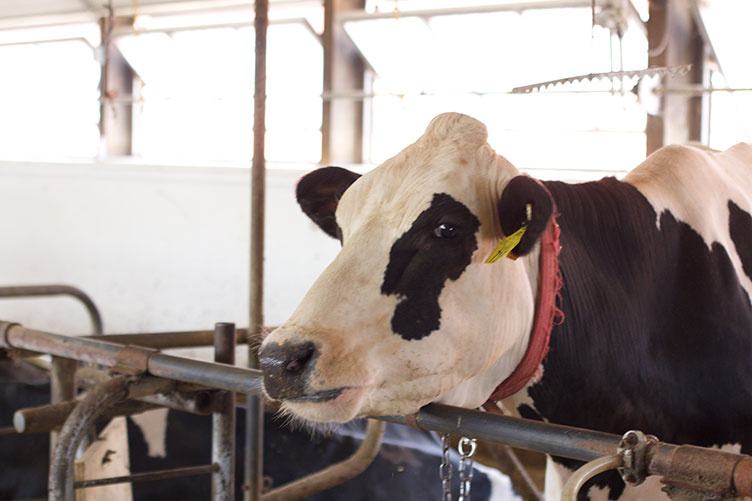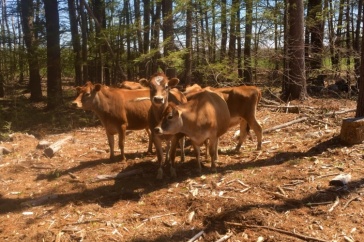

It’s the middle of the night, and doctoral student Kayla Aragona has just received a text message on her cell phone from a cow in labor at the UNH Fairchild Dairy Teaching and Research Center. No, it’s not a prank. A sensor — Moocall — attached to the cow’s tail has detected that the cow is highly active, likely due to an increase in contractions.
Since spring, Aragona has been using Moocall sensors at the dairy, a facility of the New Hampshire Agricultural Experiment Station, to help better monitor pregnant cows during the night. Roughly the size of — well, a cell phone, Moocall attaches to the tail of the cow and measures tail movement patterns triggered by labor contractions. When the cow reaches a certain level of intensity and movement over a specific period of time, the Moocall sends a text alert to Aragona’s cell phone.
“When properly fastened, the Moocall will give me a two-hour notice for a calving by sending me text alerts when a cow is active for one hour, and then again when a cow has been active for two hours,” says Aragona, who previously relied on farm staff — or her own nightly checks — to monitor cows who were close to calving. “This makes it easier for me to be here when a calf is born to ensure that the birth goes smoothly.”
The technology, which also can be used to send emails, was developed in Ireland by a dairy farmer who lost a heifer and a calf during an unattended birth. According to the company, UNH is one of only two university research dairy farms in the United States using Moocall.
And while the Moocall has saved Aragona a lot of sleepless nights, the technology isn’t foolproof. “The funniest experience with the Moocall so far has been when I used it on a cow that did not like it,” she says. “She would rub her tail up against everything and literally bang the sensor against the wall to try to get it to fall off. No wonder I got a few false alarms!”
Originally published in UNH Magazine Fall 2016 Issue
-
Written By:
Lori Tyler Gula, PhD | NH Agricultural Experiment Station | lori.gula@unh.edu | 603-862-1452

















































